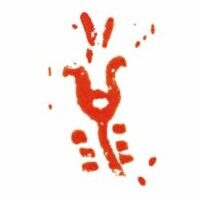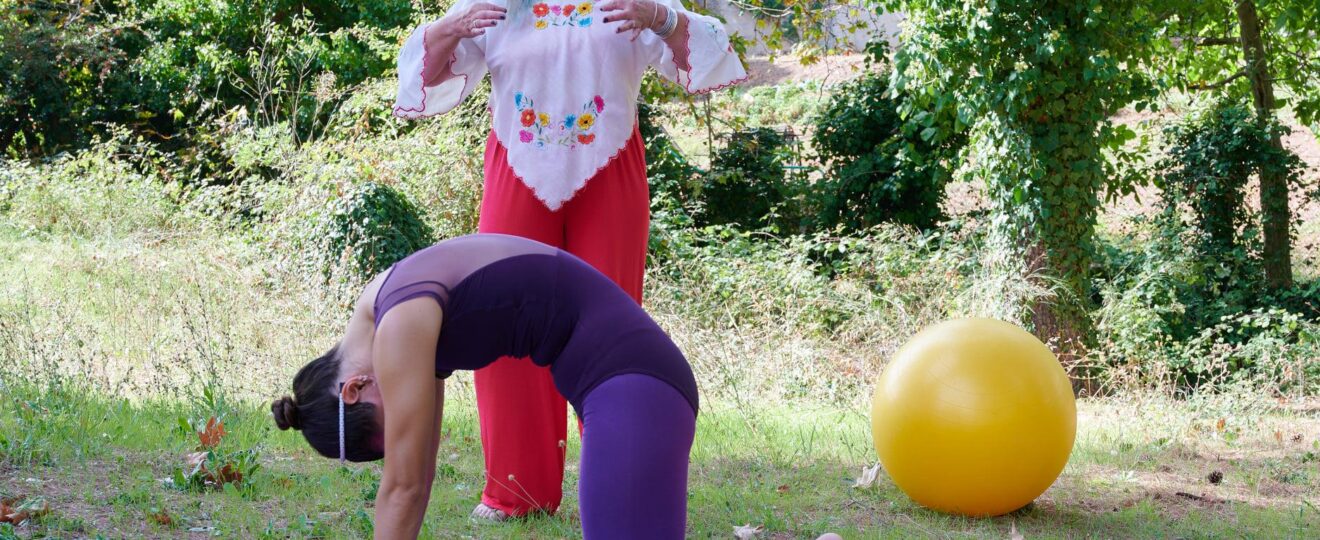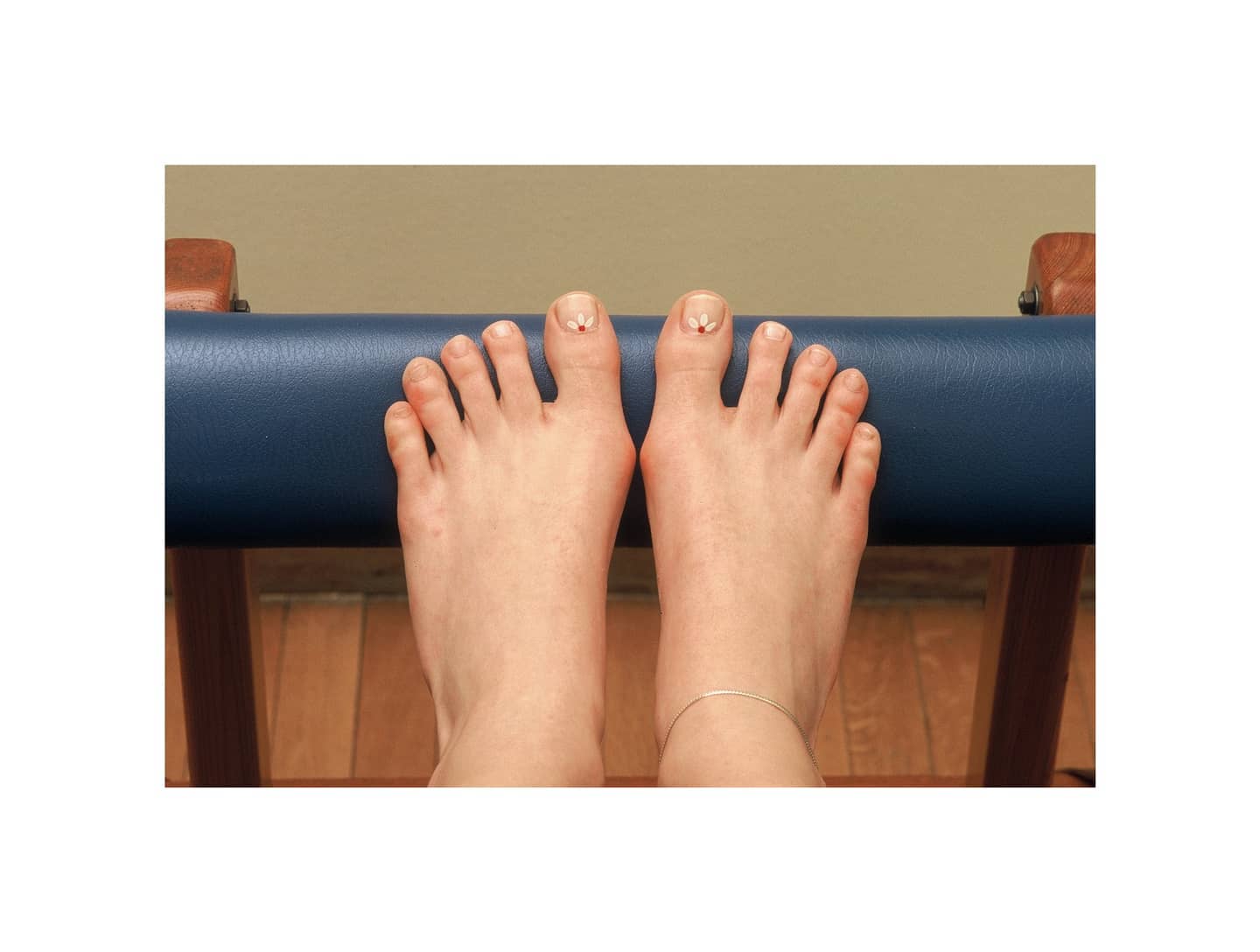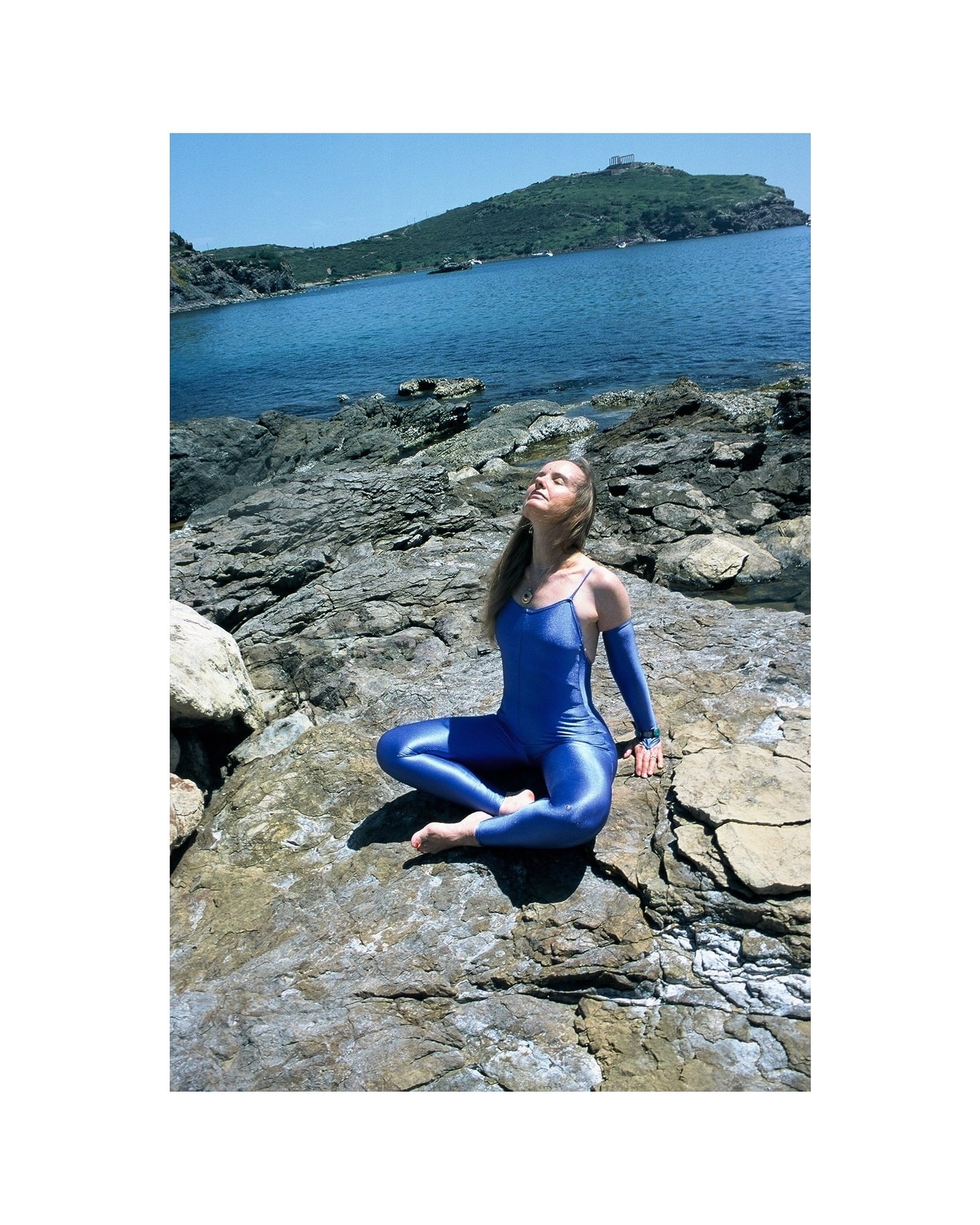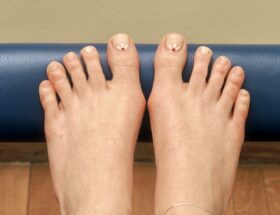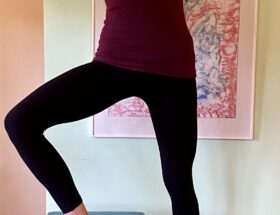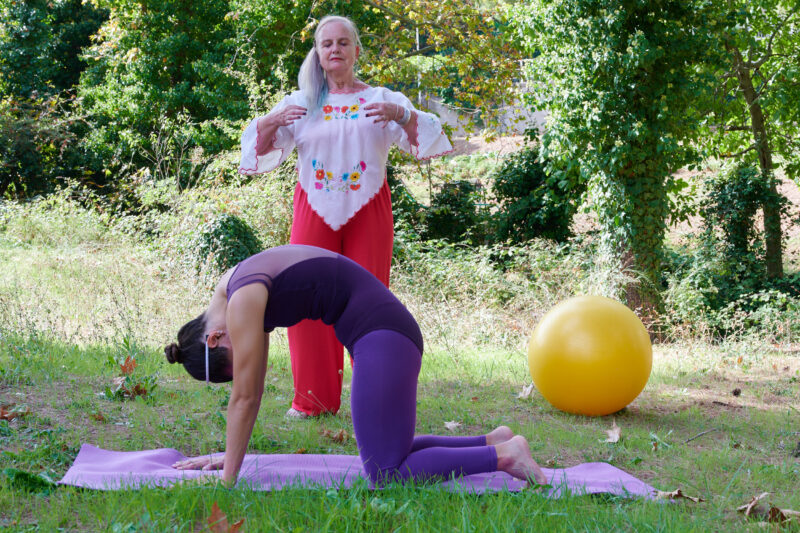
PILATES USED FOUR POSITIONS OF THE SPINE
Jerome Andrews’ explained that Joseph Pilates referred to four positions of the spine.
The first position of the spine was a rounded back, or what is sometimes referred to as the “C” curve.
The easiest way to explore the first position of the spine is on all fours. it is important that the thigh bone and the arm bones are perpendicular to the floor. Imagine that you have roots extending from the knees going deep into the earth. The knees are in a straight line with the hip joints. The arms are straight. It is important that we avoid hyper extending or tensing the elbows. The palm of the hand is fully in touch with the floor and the fingers are are spread wide. The middle finger points directly forward. Make sure the whole length of the finger is in touch with the floor, especially the roots of the fingers. Making sure that we distribute the weight of the body through the whole hand out into the fingertips helps us to avoid pressure or tension in the wrists. Imagine that you have roots extending from the palms deep into the earth and that he wrist is directly in a line with the shoulder joints.
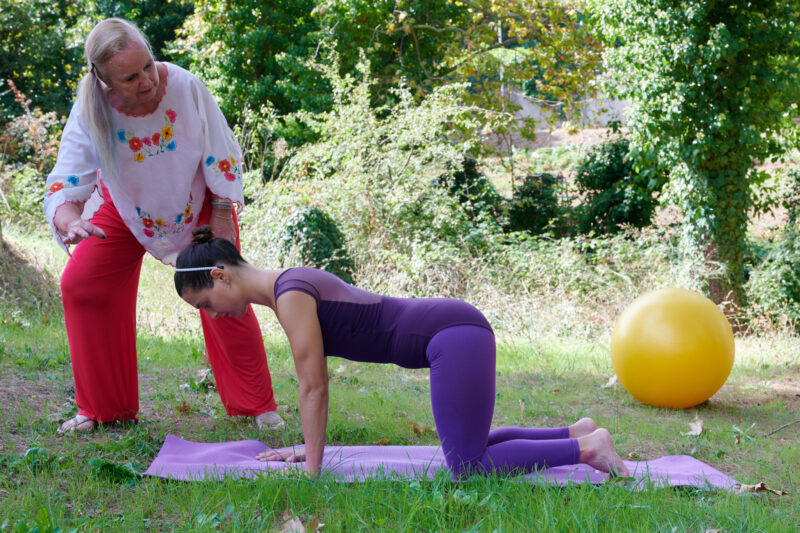
CONCENTRATION AND ACCURACY IS IMPORTANT
The palms of the hands and the knees are sites of support. Accuracy is important. If we have our knee, for example, just 1 cm more back of the hip joint, we will not have the as much support and as a result our attempts to articulate the spine will be less effective. We allow gravity to affect our sites of support because the more we feel our roots the more easy the exercise will be and the more subtle our movements can be.
The spine is in second position (straight and parallel to the floor) to start.
The student focuses on moving from the bones of the body, the skeleton, and leaves the muscles and fascia relaxed so that they follow the direction of the bones.
First spinal succession can start either at the top or the bottom of the spine depending on what is more appropriate for the movement.
The focus is extremely specific. The student concentrates on accessing the back edge of the spine, when moving into the first spinal succession . The spinal processes form the back edge of the spine and have a completely different quality to the front part of the spine. Let us say that the student is starting the movement from the tip of the coccyx. The student focuses on the back edge of each vertebra, moving one vertebra at a time into the rounded position. It is important to truly follow the spine one vertebra at a time, paying attention to each one until you reach the very last vertebra in the neck which is just behind the nose.
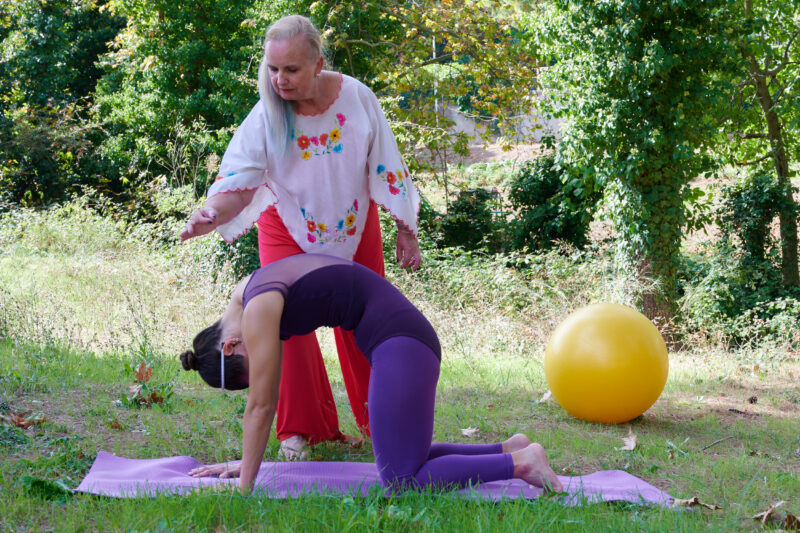
It is important not to skip over a vertebra that might be a little more difficult to move individually. Those vertebrae are often the more important ones that we need to mobilise! When we are exploring and being curious about this process we can spend more time with a “stubborn” vertebra, soften and relax around it, and with our out breath achieve a movement.
MOVE THE SPINOUS PROCESSES ONE BY ONE.
You can think about the spinous processes like they are the quills of a porcupine that pop out of the skin one by one. An image that worked for me was to think about how a mother cat picks up her kittens. It is as if you delicately lift up the vertebra and it pops out of the skin.
It is important not to grip around any area of the spine. In order to mobilise the coccyx and the sacrum (the tail) the back of the pelvis needs to be soft and it is very important to avoid tension in the hip joints.
When we move into the neck area the shoulders need to be completely relaxed.
To achieve full articulation make sure the front of the body is totally relaxed. Soften the last rib and allow the breast bone to move gently inwards.
There is no need to think of engaging the pelvic floor or pulling the abdomen in. If we can articulate the spine our pelvic floor muscle will engage just enough and we will access the deep abdominals. This happens in a much more essential way, if we truly move from the bones of the spine, and allow the muscles and fascia to follow.
USE YOUR BREATH.
Use as many breaths as you need. Take as much time as you need to explore and be curious about this process. The body remembers deep work and will reward you. Just use your out breath to relax any holding patterns or pain.
Being able to move the spine bone by bone with such sensitivity is healing. It will relieve pain and sites of tension. As we learn to apply the spinal succession to all forms of movement and even advanced exercises we will never injure ourselves.
It is a process which is good for everyone.
Copyright: Jenny Colebourne
